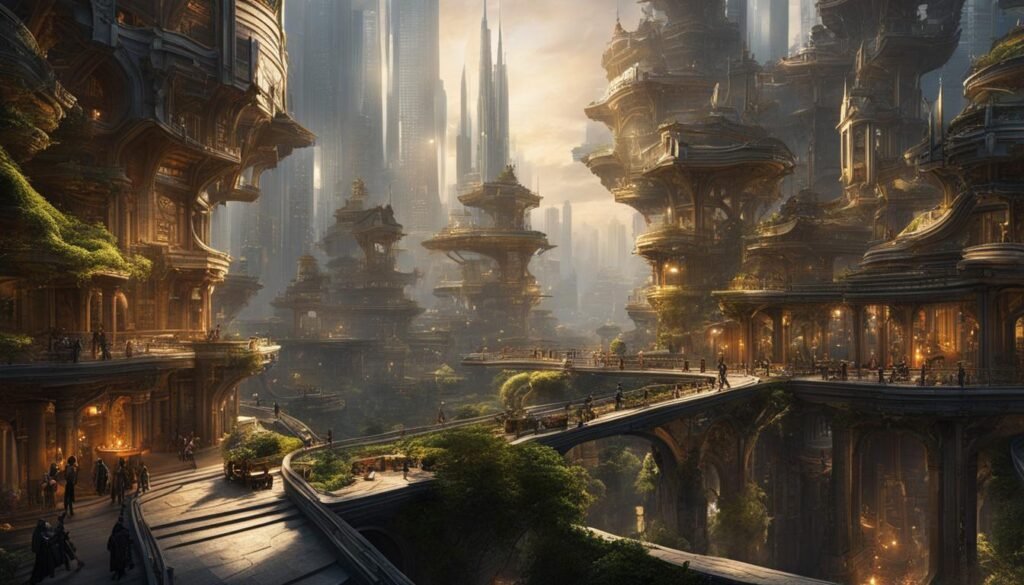Table of Contents
ToggleEmbracing the Future of Angular with v17 Updates
Angular’s latest release, version 17, marks a significant step forward in its evolution. This update includes several key features:
TypeScript 5.2 Integration: Enhances code readability and development experience.
New Declarative Control Flow: Introduces a built-in syntax for control flow, simplifying complex conditional logic.
Deferrable Loading: A technique for efficient resource loading, improving performance and user experience.
These updates demonstrate Angular’s commitment to modernization and developer satisfaction.
Angular’s Roadmap: Steering Towards Developer Excellence
Angular’s roadmap reflects a focus on improving developer tools and ergonomics. Upcoming features are expected to streamline development processes, making builds faster and more intuitive. Enhancements in testing tools and debugging capabilities are also anticipated.
Fostering Community and Ecosystem Growth
The Angular community, known for its vibrant and supportive nature, plays a crucial role in the framework’s evolution. Initiatives like Angular Community Days and open-source contributions foster a rich ecosystem, encouraging knowledge sharing and innovation.
Angular’s Progressive Vision
Angular’s future is shaped by a progressive vision that values community input and strives for technological excellence. The framework aims to provide developers with advanced tools, ensuring better application performance and a dynamic web environment.
Improved Performance Optimizations
Performance optimization is a key focus, with efforts to reduce bundle sizes and optimize rendering. These enhancements aim to ensure that Angular applications load quickly and provide a seamless user experience.
Enhanced CLI Capabilities
Recent updates to Angular CLI have introduced new capabilities, such as easier component, service, and module generation, optimizing application bundles for production, and enabling faster development workflows.
Advanced Testing Tools
Angular continues to enhance its comprehensive suite of testing tools, making it simpler for developers to write various types of tests for their applications.
Angular Community and Ecosystem
The Angular community is a cornerstone of the framework’s success, offering vast resources like online forums, tutorials, and video courses. This collaborative environment enables developers to exchange ideas, discuss best practices, and seek assistance.
Angular Future Trends and Prospects
Looking ahead, Angular is expected to focus on:
- The Rise of Progressive Web Applications (PWAs): Angular’s strong support for PWAs positions it well in this growing trend.
- Focus on Performance Optimization: Ongoing efforts to improve efficiency and responsiveness of web applications.
- Continued Evolution of the Angular Ecosystem: Advancements in component testing, server-side rendering support, and Angular Material are anticipated.
- Lern about latest Angular Trends 2023
Angular’s Evolving Features and Roadmap
Future updates in Angular aim to enhance component testing, improve server-side rendering support, and bring advancements in Angular Material.
Community-Driven Initiatives
Within the Angular community, numerous community-driven initiatives have emerged, further enriching the ecosystem. These initiatives include open-source projects, libraries, and tools created by community members to extend Angular’s capabilities and address specific development challenges. By embracing these community-driven initiatives, developers can leverage the collective knowledge and expertise of the Angular community to enhance their projects and streamline their development workflows.
| Benefits of the Angular Community | Ecosystem | Collaboration and Knowledge Sharing |
|---|---|---|
| Access to vast resources, including documentation, tutorials, and video courses | A wide range of community-driven initiatives, libraries, and tools | Engagement with like-minded developers, exchanging ideas and best practices |
| Frequent updates and improvements driven by user feedback | Opportunities to contribute to open-source projects and extend Angular’s capabilities | Support and assistance from the community when facing development challenges |
| Enhanced learning and skills development through collaboration | A vibrant and active community that fosters innovation and growth | Empowerment to shape the future of Angular through collective contributions |
Continued Evolution of Angular Ecosystem
The Angular ecosystem is constantly evolving, driven by the vibrant community and the framework’s commitment to staying relevant and innovative. Developers can expect to see advancements in component testing, improved support for server-side rendering, and a more seamless integration with popular frameworks and libraries. These updates and enhancements will enable developers to build even more robust and cutting-edge applications with Angular.
| Future Trends | Angular Development Trends | Angular Future Prospects |
|---|---|---|
| Progressive Web Applications (PWAs) | Performance Optimization | Continued Evolution of Angular Ecosystem |
| PWAs combine the best of web and mobile applications, offering a seamless user experience. | Angular’s commitment to performance optimization ensures fast and efficient web applications. | The Angular ecosystem will continue to evolve, providing developers with new tools and features. |
| Developers can leverage Angular’s support for PWAs to create feature-rich applications. | Optimizing change detection, lazy loading modules, and AOT compilation improve Angular app performance. | Advancements in component testing, server-side rendering, and integration with popular frameworks. |
Angular vs Other Frameworks
When it comes to choosing a framework for web development, Angular stands out as a powerful and versatile option. But how does it compare to other frameworks like React or Vue.js? Let’s take a closer look at the key differences and strengths of Angular.
AngularJS vs Angular
Before diving into the comparisons with other frameworks, it’s important to note that Angular has evolved significantly from its predecessor, AngularJS. Angular offers improved performance, enhanced scalability, and a more modular architecture compared to AngularJS. With Angular, developers can take advantage of features like two-way data binding, dependency injection, and a robust command-line interface (CLI) for efficient development.
Angular vs React vs Vue.js
Each framework has its own unique strengths, but Angular’s comprehensive feature set and large community support make it a popular choice for complex, enterprise-level applications. React, on the other hand, excels in its component-based architecture and virtual DOM, making it ideal for building interactive user interfaces. Vue.js, known for its simplicity and ease of learning, offers a flexible and lightweight framework for smaller projects.
When comparing Angular to React and Vue.js, it’s important to consider the specific needs of your project. Angular’s opinionated architecture and strict adherence to best practices make it an excellent choice for building large-scale applications with a focus on maintainability and scalability. React’s flexibility and vibrant ecosystem make it a preferred option for creating interactive UI components. Vue.js, with its ease of use and gentle learning curve, is often favored for smaller-scale applications or rapid prototyping.
| Framework | Strong Points |
|---|---|
| Angular | Comprehensive feature set, large community support, scalability |
| React | Component-based architecture, virtual DOM, flexibility |
| Vue.js | Simplicity, ease of learning, lightweight |
Ultimately, the choice between Angular, React, or Vue.js depends on your project requirements, team expertise, and personal preference. Consider the specific needs of your application, evaluate the strengths of each framework, and make an informed decision based on what aligns best with your goals and resources.
Benefits of Using Angular
When it comes to web development, Angular offers numerous benefits that make it a top choice for developers. Its built-in features and best practices contribute to creating robust and high-performing web applications. Let’s explore some of the key benefits of using Angular.
Improved Productivity and Streamlined Development
Angular’s two-way data binding and dependency injection make development more efficient and productive. With two-way data binding, any changes in the UI are automatically reflected in the underlying data model, simplifying the development process. Dependency injection allows for better code organization and reusability, reducing the amount of code developers need to write.
Code Consistency and Maintainability
Angular promotes code consistency through its component-based architecture. By breaking the application into reusable components, developers can maintain a consistent code structure and easily manage code changes. This modular approach makes it easier to scale and maintain large applications, saving time and effort in the long run.
Performance Optimization and Best Practices
Angular emphasizes performance optimization and follows best practices to ensure web applications are fast and efficient. It provides features like lazy loading modules, optimizing change detection, and leveraging Ahead-of-Time (AOT) compilation. These optimization techniques, combined with Angular’s built-in tools and guidelines, contribute to creating high-performing Angular applications.
| Benefits of Using Angular | Description |
|---|---|
| Improved Productivity and Streamlined Development | Angular’s two-way data binding and dependency injection simplify development, making it more efficient and productive. |
| Code Consistency and Maintainability | Angular’s component-based architecture promotes code consistency and maintainability, making it easier to scale and manage applications. |
| Performance Optimization and Best Practices | Angular emphasizes performance optimization and follows best practices to ensure high-performing web applications. |
Overall, Angular offers a range of benefits that contribute to an enhanced web development experience. Its built-in features, code consistency, and performance optimizations make it a powerful framework for creating modern and efficient web applications.
Angular Performance Optimization
When it comes to developing high-performing web applications with Angular, performance optimization is key. By following Angular best practices and leveraging built-in tools, developers can ensure that their applications are efficient, fast, and deliver an exceptional user experience.
One important aspect of Angular performance optimization is lazy loading modules. This technique allows you to load modules only when they are needed, reducing the initial bundle size and improving the application’s load time. By selectively loading modules based on user interactions or routes, you can keep your application lean and responsive.
“Lazy loading modules in Angular has significantly improved the performance of our web applications. It allows us to split our application into smaller, more manageable chunks that are only loaded when necessary, resulting in faster load times and better overall performance.”
Another essential optimization technique is optimizing change detection. Angular’s change detection mechanism is powerful but can be resource-intensive if not used efficiently. By using techniques such as OnPush change detection strategy and tracking changes at the component level, you can minimize unnecessary change detection cycles and boost your application’s performance.
Angular Performance Optimization Best Practices:
- Utilize lazy loading modules to reduce bundle size and improve load times.
- Optimize change detection by implementing the OnPush change detection strategy.
- Minimize DOM manipulations by using Angular’s built-in directives and pipes.
- Utilize Angular’s Ahead-of-Time (AOT) compilation to improve application startup time.
- Cache HTTP requests and implement efficient data fetching strategies.
- Apply code minification and compression techniques to reduce file sizes.
By prioritizing performance optimization and adhering to Angular best practices, developers can create high-performing web applications that deliver exceptional user experiences. Remember, optimizing performance is an ongoing process, and it’s important to continuously monitor and fine-tune your application for optimal results.
| Technique | Description |
|---|---|
| Lazy Loading Modules | Load modules only when needed, reducing bundle size and improving load times. |
| Optimize Change Detection | Implement the OnPush change detection strategy to minimize unnecessary change detection cycles. |
| Minimize DOM Manipulations | Utilize Angular’s built-in directives and pipes to reduce unnecessary DOM manipulations. |
| AOT Compilation | Improve application startup time by utilizing Angular’s Ahead-of-Time (AOT) compilation. |
| HTTP Request Caching | Cache HTTP requests and implement efficient data fetching strategies. |
| Code Minification and Compression | Reduce file sizes by applying code minification and compression techniques. |
Angular Development Community and Resources
The Angular development community is a vibrant and supportive ecosystem that provides developers with a wealth of resources and knowledge. Whether you’re a beginner or an experienced Angular developer, there are numerous online forums, documentation, tutorials, and video courses available to help you learn and excel in Angular development.
One of the key strengths of the Angular community is its active and engaged members. Developers from all over the world come together to share their expertise, collaborate on projects, and provide support to one another. This sense of community fosters learning and growth, as developers can learn from the experiences and insights of others.
Additionally, the Angular ecosystem offers a wide range of third-party libraries and tools that extend the capabilities of the framework. These libraries and tools can enhance productivity, streamline development processes, and provide solutions to common challenges faced by Angular developers. With such a rich and diverse ecosystem, developers have access to an extensive toolkit that can help them build robust and feature-rich applications.
Online Resources and Forums
- Angular Official Documentation: The official Angular documentation is a comprehensive resource that provides detailed explanations, examples, and best practices for Angular development. It covers all aspects of the framework, from getting started to advanced topics.
- Angular Dev.to Community: Dev.to is a popular online community where developers can share their knowledge and experiences. The Angular community on Dev.to is active and supportive, with developers posting tutorials, articles, and engaging in discussions.
- Stack Overflow: Stack Overflow is a question and answer site where developers can ask questions and get answers from the community. The Angular tag on Stack Overflow has a large number of active contributors who are always willing to help fellow developers.
Video Courses and Tutorials
- Angular University: Angular University offers a range of video courses and tutorials for Angular development. These courses cover various topics, from the basics of Angular to advanced techniques.
- Udemy: Udemy is an online learning platform that offers a wide selection of Angular courses. These courses are created by industry experts and cover everything from Angular fundamentals to advanced topics like testing and deployment.
- YouTube Channels: Several YouTube channels dedicated to Angular development provide tutorials, tips, and insights. Some popular channels include Traversy Media, Academind, and The Net Ninja.
Third-Party Libraries and Tools
The Angular ecosystem boasts a plethora of third-party libraries and tools that can enhance the development process. Some popular libraries and tools include:
| Library/Tool | Description |
|---|---|
| Angular Material | A UI component library that follows the Material Design principles. It provides a set of ready-to-use components for building sleek and responsive user interfaces. |
| NgRx | A state management library for Angular applications. It follows the Redux pattern and helps manage complex application state. |
| PrimeNG | A collection of rich UI components for Angular applications. It offers a wide range of customizable components, including grids, charts, and data tables. |
| Angular CLI | A command-line interface tool that helps with creating, building, and deploying Angular applications. It automates many development tasks and provides a streamlined development experience. |

“The Angular development community is a valuable resource for any developer working with the Angular framework. With its supportive members, extensive documentation, and wide range of libraries and tools, the Angular community provides the necessary support and knowledge to help developers excel in their projects.” – John Angular Developer
Angular’s Evolving Features and Roadmap
The Angular framework continues to evolve with new features and updates, ensuring it remains at the forefront of web development. The Angular team follows a well-defined roadmap to introduce enhancements that enhance developer productivity and improve application performance. Let’s take a closer look at some of the evolving features and upcoming changes in Angular. In future of Angular, we will see more development.
Improved Component Testing
One of the key areas of focus in Angular’s roadmap is enhancing component testing capabilities. With Angular’s built-in testing framework, developers can efficiently write unit tests to validate the behaviour of individual components. The upcoming updates will further enhance this feature, providing developers with more robust testing tools and streamlined workflows for efficient testing and debugging.
Advanced Server-Side Rendering Support
Server-side rendering (SSR) is gaining popularity as it improves page load times and provides better SEO performance. Angular is prioritizing the improvement of its SSR capabilities, making it easier for developers to build server-rendered applications. The upcoming updates will introduce enhancements to Angular’s SSR support, enabling developers to deliver fast and optimized web experiences.
Advancements in Angular Material
Angular Material, a UI component library for Angular, offers a wide range of pre-built and customizable UI components that help developers build visually appealing and responsive applications. The Angular team is continuously improving Angular Material with new components, styling options, and accessibility features. The upcoming updates will introduce advancements that further enhance the usability and flexibility of Angular Material.
| Feature | Description |
|---|---|
| Enhanced Component Testing | Improved testing tools and workflows for efficient component testing. |
| Advanced Server-Side Rendering Support | Enhancements to Angular’s server-side rendering capabilities for faster page load times. |
| Advancements in Angular Material | Introduction of new components, styling options, and accessibility features in Angular Material. |
The evolving features and updates in Angular demonstrate the commitment of the Angular team to provide developers with a modern and robust framework for web development. By staying up-to-date with Angular’s roadmap and embracing these evolving features, developers can leverage the full potential of Angular and deliver exceptional web applications.
Conclusion
Angular’s future is bright, with ongoing improvements and a strong community backing. Its evolving features and roadmap indicate a commitment to developer experience and staying current with industry trends. Angular’s robust capabilities and comprehensive environment make it a powerful choice for creating modern, efficient web applications.
FAQ
What is the future of Angular?
The future of Angular is promising, with continuous evolution and improvements expected. Angular is likely to maintain its position as one of the leading choices for web development.
What are some of the latest features and updates in Angular?
Some of the latest features include improved performance optimizations, enhanced CLI capabilities, and advanced testing tools. These updates aim to provide developers with a more efficient and seamless development experience.
How active is the Angular community?
The Angular community is vibrant and active, with a robust ecosystem supporting developers worldwide. It has a growing number of contributors and a strong online presence where developers can share knowledge and collaborate.
What are the future trends and prospects for Angular?
Progressive Web Applications (PWAs) are expected to gain more popularity, and Angular’s support for building PWAs positions it well for this trend. Additionally, the focus on performance optimization and best practices is likely to continue.
How does Angular compare to other frameworks?
Angular offers improved performance, enhanced scalability, and a more modular architecture compared to its predecessor, AngularJS. While each framework has its unique strengths, Angular’s comprehensive feature set and large community support make it a popular choice for complex, enterprise-level applications.
What are the benefits of using Angular for web development?
Angular’s built-in features like two-way data binding and dependency injection streamline development and improve productivity. It also promotes code consistency and maintainability, making it easier to scale and manage applications. Angular’s performance optimizations and adherence to best practices contribute to creating robust and high-performing web applications.
How can developers optimize performance in Angular?
By following best practices such as lazy loading modules, optimizing change detection, and utilizing Angular’s Ahead-of-Time (AOT) compilation, developers can ensure their applications are efficient and fast. Understanding the performance implications of different design decisions and leveraging Angular’s built-in tools greatly improves performance.
What resources and support are available for Angular developers?
The Angular development community offers numerous online forums, documentation, tutorials, and video courses to help developers learn and leverage Angular effectively. The Angular ecosystem also provides a wide range of third-party libraries and tools that extend the framework’s capabilities, making development more efficient and productive.
What are some of Angular’s evolving features and roadmap?
The Angular roadmap outlines plans for new features and improvements, including enhanced component testing, improved support for server-side rendering, advancements in Angular Material, and seamless integration with popular frameworks and libraries.
More angular knowledge at dropoutdeveloper.com







